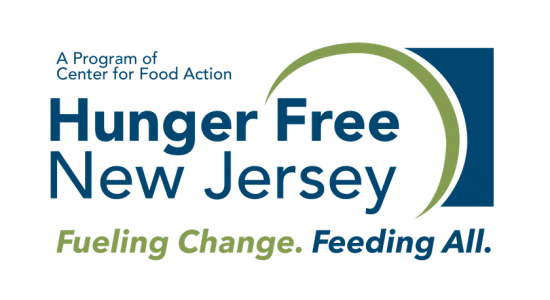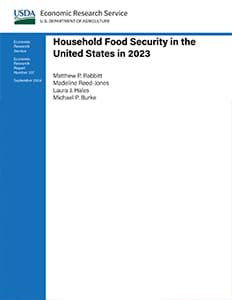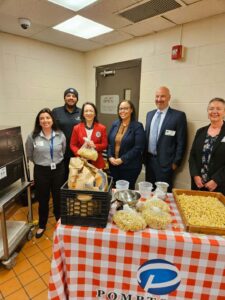Earlier this week the United States Department of Agriculture published their latest Household Food Security report. The report reveals that 47.4 million people lived in households experiencing food insecurity last year, an increase of 3.2 million compared to 2022, and 13.5 million compared to 2021. This spike was likely largely driven by inflation and the rollback of critical COVID-19 pandemic relief efforts that provided temporary boosts to Supplemental Nutrition Assistance Program (SNAP) benefits, allowed schools to offer school meals to all their students at no charge, and expanded the Child Tax Credit. Policymakers must return to and build on these proven interventions so that all households may thrive.
An estimated 86.5 percent of U.S. households were food secure throughout the entire year in 2023, with access at all times to enough food for an active, healthy life for all household members. The remaining households (13.5 percent, statistically significantly higher than the 12.8 percent in 2022) were food insecure at least some time during the year. Very low food security is the more severe range of food insecurity where one or more household members experience reduced food intake and disrupted eating patterns at times during the year because of limited money or other resources for food. In 2023, 5.1 percent of households were very low food secure, an estimate that is statistically similar to the 5.1 percent in 2022.
Children were food insecure at times during 2023 in 8.9 percent of U.S. households with children (3.2 million households), statistically similar to the 8.8 percent (3.3 million households) in 2022, but up from both 6.2 percent (2.3 million households) in 2021 and 7.6 percent (2.9 million households) in 2020. These households with food insecurity among children were unable at times to provide adequate, nutritious food for their children.
Food insecurity in the United States would be even worse without federal nutrition programs and initiatives aimed at addressing poverty.
To read the full report, click here.




